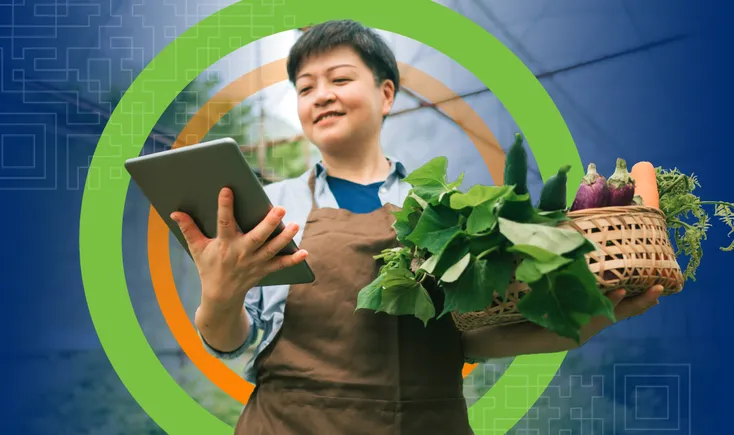Bite-sized guide to FSMA Rule 204

FSMA Rule 204? FTL? KDE? A lot of talk is going on in the food industry about the latest regulations from the U.S. Food and Drug Administration (U.S. FDA)—and it can be a lot to digest. With a full plate of requirements, here is some information to snack on:
- Signed into law in 2011, the Food Safety Modernization Act (FSMA) aims to strengthen the food safety system to protect public health.
- Section 204(d), also known as FSMA Rule 204 or the U.S. FDA Food Traceability Final Rule, went into effect in January 2023 and establishes the framework for end-to-end traceability throughout the food industry by requiring companies to maintain and provide specific information, also known as records.
- The rule outlines specific Key Data Elements (KDEs) that describe Critical Tracking Events (CTEs), or steps in the supply chain, which need to be recorded.
- If you manufacture, process, pack, or hold any of the foods on the Food Traceability List (FTL), you are required to keep and sometimes share these records.
Ready for the main course?
Fortunately, you might already have something in your kitchen to help meet the requirements. GS1 Standards have already been leveraged by many members of the food industry to improve food traceability. Global Trade Item Numbers (GTINs) are being assigned to products up and down the food supply chain. Additionally, a Global Location Number (GLN) can be assigned to your fields, packhouse, distribution center, and other locations you operate in to bring that same uniqueness to how you identify your locations. These, along with other GS1 Standards for identification, can help you achieve the traceability required by FSMA Rule 204.
What is a GTIN?
A Global Trade Item Number® (GTIN®) is a GS1® Identification Key that is used to identify a trade item. GTINs are used anywhere that a product or service needs to be identified along the supply chain. This includes the variations of the product getting packed, transported, and transformed.
The U.S. FDA does not require product identification by a GTIN, although it does note that companies that use the GTIN for unique identification might already be linking to several of the required Key Data Elements (KDEs), such as elements of the product description. These KDEs may be linked to a GTIN in a database, and entities that use this practice would not need to maintain this information separately.
What is a GLN?
A Global Location Number (GLN) is a globally unique GS1 Identification Key used to identify parties and locations. It answers the questions “who” and “where” within an organization and throughout the entire global supply chain
The U.S. FDA states that businesses that use location identifiers to differentiate between intercompany locations (e.g., store numbers) may choose to include that information as part of their location description.
What is an SSCC?
The Serial Shipping Container Code (SSCC) is the GS1 Identification Key used to identify a logistic unit. The SSCC identifies a single logistic unit throughout its transport journey. Like a parcel tracking number, it acts as a single reference for the unit over its journey from source to destination. The SSCC can be encoded in a barcode and placed directly on the unit’s logistics label to be a physical representation of the identity of the object.
While SSCCs are not required, the U.S. FDA acknowledges that they can be a helpful tool for improving traceability.
Serving up success
When neatly plated, these GS1 Standards for identification can provide consistency and interoperability across different environments and systems that will help you meet the requirements of FSMA Rule 204.
Leading manufacturers, suppliers, distributors, retailers, and foodservice operators are already serving up traceability within their supply chains to help with FSMA Rule 204 requirements—learn how you can too
About GS1 US:
GS1 US® enables companies to power their supply chains to deliver safe, consistent, authentic and trusted experiences. Best known as a source for UPC barcodes, GS1 is a not-for-profit global data standards organization that creates a common language for companies to identify, capture and share trusted data that links their physical and digital supply chains. Millions of businesses around the world power commerce with GS1 Standards. Learn more at www.gs1us.org.
Source: fooddive.com

